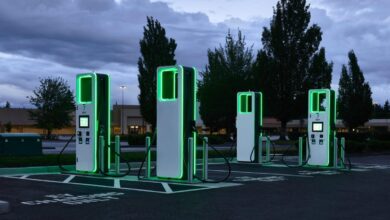Future of the US Electric Grid, Electric Vehicle Ownership, and More

Engaging Local Communities in Collaboration on Critical Mineral Resources
Growing demand for electric vehicles has increased demand for batteries and the critical minerals, such as lithium, that are essential to producing these batteries. But many deposits of critical minerals are near local communities or Indigenous lands; for example, 79 percent of US lithium reserves are within 35 miles of Native lands. On June 6, RFF will host a webinar about equitable engagement between governments, mining companies, and communities near deposits of critical minerals, along with policies that can improve collaboration and outcomes for stakeholders. RSVP for the webinar here.
Providing Affordable Energy for Low-Income Communities
Energy insecurity affects 25 percent of households in the United States, and households that identify as Black or Hispanic face energy insecurity at disproportionately high rates. These households often struggle to pay energy bills, forego other basic needs so they can afford energy bills, or keep their homes at unsafe temperatures to reduce these bills. City leadership, nonprofits, researchers, and communities in Detroit have collaborated to develop new services that can improve energy efficiency and affordability for low-income households in the city. RFF hosted a virtual panel discussion yesterday about Detroit’s efforts and how public-private partnerships can help advance community-centered climate solutions. “We need to think about how programs can work better together,” said Heather Zygmontowicz, the chief of special housing programs and strategic implementation for the city of Detroit.
Unpacking New Rules for Electricity Transmission from the Federal Energy Regulatory Commission
Earlier this month, the Federal Energy Regulatory Commission passed a pair of rules that could help facilitate the expansion of electricity transmission in the US electric grid. The grid likely will need to transport much more electricity as the nation decarbonizes, given the addition of renewable energy generation and the electrification of technologies that previously were powered by fossil fuels. RFF hosted a panel of experts yesterday to discuss the commission’s new rules and the implications of these rules for the grid. “Everywhere will be affected by this to some extent,” said Terri Eaton, senior director of federal regulatory affairs at Xcel Energy. “I think the areas that will be most affected by this will be the Southwest and the Southeast.”
Reviewing Recent Regulations on Power Plant Pollution
Last month, the US Environmental Protection Agency released four regulations on pollution from fossil fuel–fired power plants. The headline rule requires existing coal-fired power plants and new natural gas–fired power plants to reduce greenhouse gas emissions; the other three rules target specific pollutants from coal-fired power plants. In a new blog post, RFF Government Affairs Director Brad Harris reviews the four rules, synthesizing a recent webinar that RFF hosted to analyze the rules. “These rules have the potential to be the most impactful action on emissions from the electricity sector since the passage of the Inflation Reduction Act in 2022,” says Harris.
How Markets for Wood Products Affect Land Use Change
US forests are a crucial contributor to the nation’s ability to capture carbon dioxide from the atmosphere. The more land that is occupied by forests, the more carbon dioxide that trees and forest soils can capture and store—which helps the United States approach net-zero emissions, the nation’s goal for 2050. In a new working paper, RFF Nonresident Senior Fellow David N. Wear investigates factors that affect the amount of land in the southern United States that’s occupied by forests by modeling various policies and their effects on land use. “My findings indicate that enhancing [revenues for wood products] would be more effective than tree-planting subsidies at expanding the area of forests in the US South,” says Wear.



